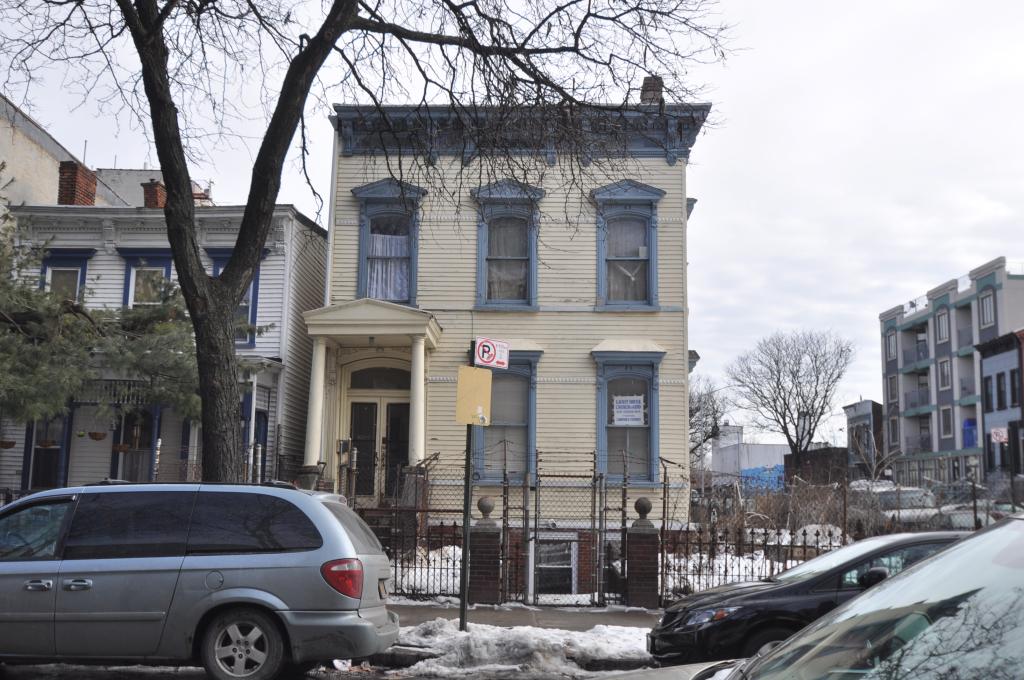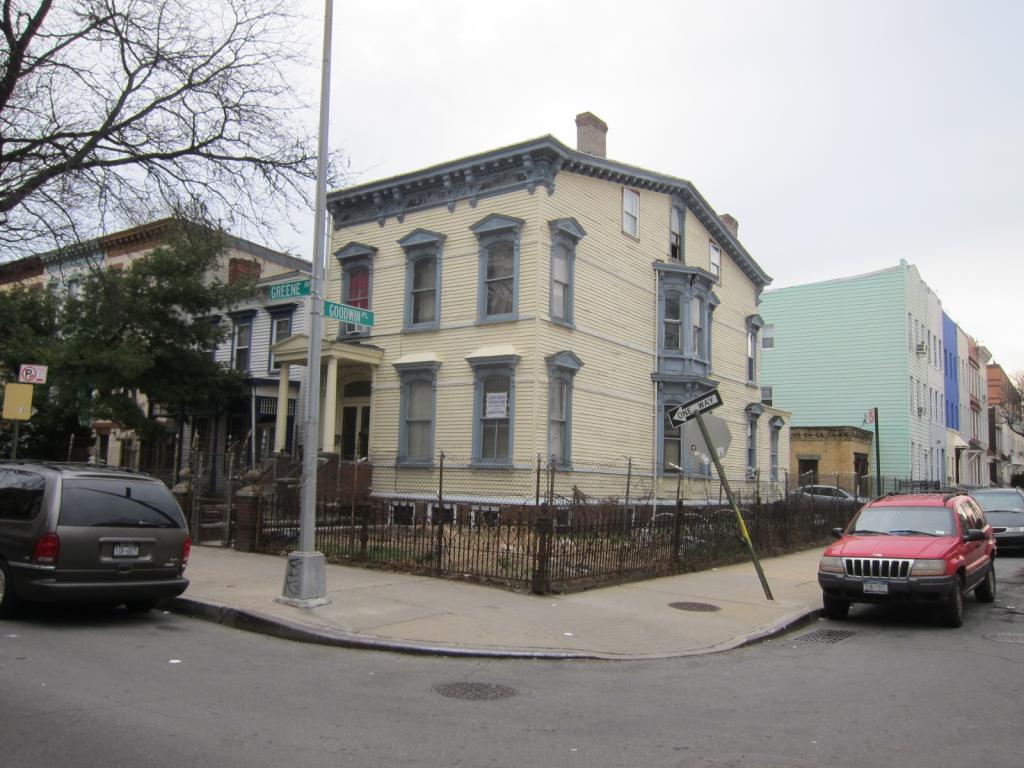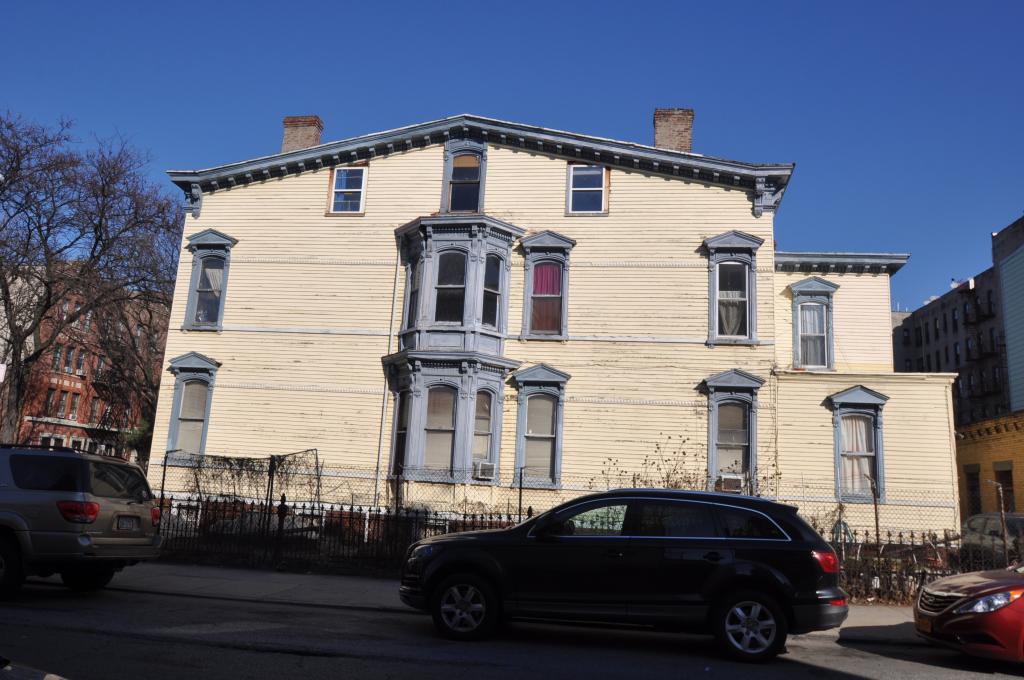Bushwick's Landmarked Wood-Frame House Goes Up for Sale, Asking $1.9 Million
The Landmarks Preservation Commission has called it “an important part of Bushwick’s architectural heritage” — and now it can be yours. The wood-frame Italianate house at 1090 Greene Avenue, built in 1887 and landmarked last year, is on the market for $1,900,000. Once the home of grocery tycoon Henry C. Bohack, whose eponymous stores used to…

The Landmarks Preservation Commission has called it “an important part of Bushwick’s architectural heritage” — and now it can be yours. The wood-frame Italianate house at 1090 Greene Avenue, built in 1887 and landmarked last year, is on the market for $1,900,000.
Once the home of grocery tycoon Henry C. Bohack, whose eponymous stores used to proliferate in Brooklyn, Queens and Long Island, the house is a “remnant of the days when Brooklyn was filled with wood framed Italianate houses,” Brownstoner’s Suzanne Spellen has written. She cited the “great details here: the columns, and entryway, the finely carved cornice, and the splendid window frames and bays.”
The LPC touted the structure — known as the Doering-Bohack House, Doering being the original owner — as “an ornate example of a vernacular frame house type popular in Bushwick in the 1880s and 1890s, of which there are few survivors.” Designed by prominent and prolific local architect Theobald Engelhardt, the house originally stood at 44 Goodwin Place; Bohack moved it here in 1901, building a warehouse on the former site.
Bushwick used to be bursting with painted ladies and now this house is one of the few wood-frames left that hasn’t been covered by vinyl siding or stucco.
Among the house’s notable features, the commission pointed to its “highly ornamented and incised neo-Grec Style window surrounds, pedimented lintels with a sunburst motif, and an elaborate cornice with paired acanthus-leaf brackets, modillions, dentils, incised ornament, and nailhead lintel courses.”
Which may be impenetrable to those without an architecture degree, but the point stands: It’s a distinctive home.
The listing, from Corcoran broker John Dadd, offers only a single exterior photo, so what’s inside is a tantalizing mystery. There are two units, which between them have eight bedrooms and four bathrooms, covering 5,328 square feet.
The house is “remarkably well preserved,” according to the listing. In fact, all the original details are intact, Dadd told Brownstoner. Typical Italianate details might include a curved staircase, coffin niche, an elaborate cornice and ceiling details in the parlor, pocket doors, and arched marble fireplaces throughout, as well as the usual old doors and window and door moldings.
The owner is P.G. Morrison Family Real Estate Inc., according to PropertyShark. Morrison was a longtime resident, though the family no longer lives there, Dadd said.
The Lighthouse Church of God was the ground-floor tenant; they’re now gone, but another tenant remains in the house. It’s being delivered vacant, though.
We’ll post interior photos if and when they’re available, though Dadd says he’s already fielding offers, so the house may move quickly.
If it does sell for ask, it will likely set a record for a Bushwick house, where fully renovated flips have lately been asking about $1,500,000.
In the meantime, has anyone seen the interior, or have a guess at what lies within?
[Listing: 1090 Greene Avenue | Broker: Corcoran] GMAP


Related Stories
Bushwick Wood Frame Becomes a Landmark
Building of the Day: 1090 Greene Avenue
Breaking: Landmarks to “Decalendar” Hundreds of Proposed Historic Sites?
Follow Brownstoner on Twitter and Instagram, and like us on Facebook.
[sc:daily-email-signup ]








I live just ip the block across Broadway in the bed study section and I always pass this house…
It needs work but i happened to catch a glance of the interiors and it has tons of original detail truly a beautifull house, but 1.9 million is reaching.
Suzanne, I think we are very much on the same page here.
Around 1977, the Landmarks Preservation Commission submitted a preliminary report that would have landmarked several VERY old wood frame residences situated on Goodwin Place, just down the block from 1090 Greene Avenue. These buildings probably belonged to the first generation of residences to be constructed in the area that we now refer to as Bushwick. Unfortunately, no sooner had the notice gone out than these buildings literally went up in smoke. This was a very major loss.
While the 1977 blabkout related damage was mostly limited to the Broadway commercial strip – though the roof of the Bossert mansion on Bushwick Ave., which then functioned as a day care center, was fire damaged during the night of the blackout – during this decade the wholesale abandonment of housing in Bushwick – often accompanied by arson, was a constant and critical problem.